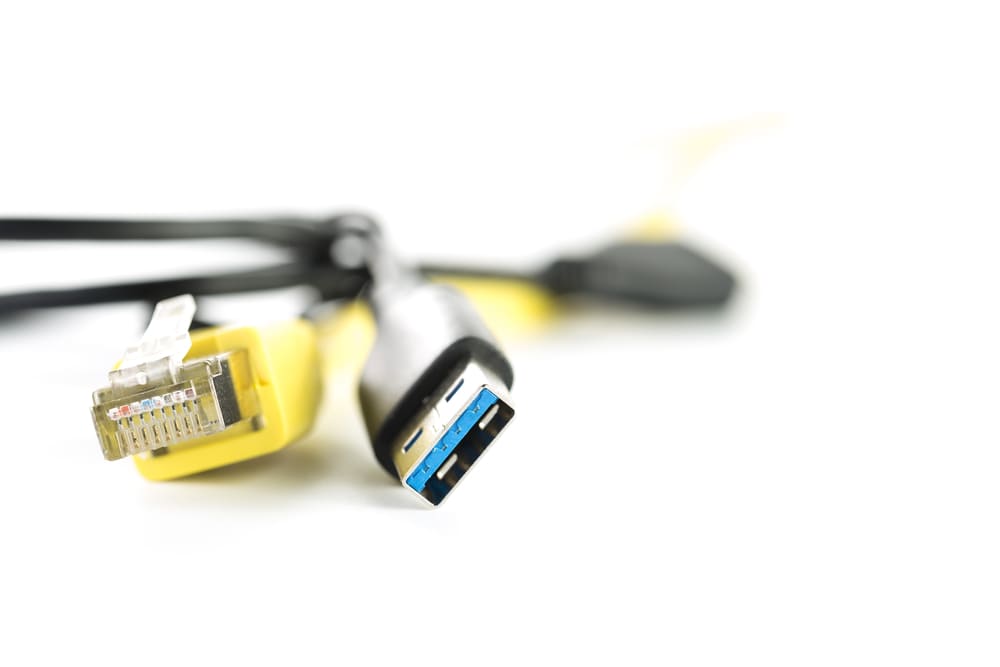
During older times, people were fine with having a limited data transfer speed. This was because the total sizes for files were really small. This made it easier to transfer them in a few minutes. However, over time as the quality of videos and data has increased, so has their file sizes.
This makes it harder for people to transfer their data between devices. Considering this, companies have started to manufacture newer ports and wires that can be used. These provide you with a much better transfer rate than the prior devices and even the speeds are much more stable.
USB 3.0 Speed vs Ethernet Speed
If you are wondering about upgrading your system to use these new ports. Then there are mainly two options that you might be confused about. These are the USB 3.0 and Ethernet speed ports. We will be using this article to provide you with a comparison between them so it can be easier for you to choose one out of the other.
USB 3.0 Speed
The USB 3.0 is newer technology when compared to 2.0 ports and ethernet wires. These can be identified by the difference in color provided by the companies. The USB 3.0 ports are usually colored blue from the bottom so that it can be easier for you to tell their ports. Although, some brands might not stick with the color scheme and it can depend according to the system you purchase.
Aside from this, it is important to check if your system has a 3.0 port available on it. Older systems do not have this on them and there is no way to utilize these speeds without having a connection for it on your device. The USB 3.0 connections have a total output speed of up to 4800 Mbps. This shows that the port can transfer files at a 10x faster rate than its prior 2.0 version.
Another great thing about this connection is that even if you connect a device that had a 2.0 connector on it. Your port will read the device, this means that the 3.0 ports are backward compatible. This takes out the worry of having both the ports on your device and you can work fine with just having one of them. Even the power output of 3.0 is amazing when compared to other connections.
This makes it easier for users to charge their mobiles and other appliances in short times. Normally fast charging cannot be used on connections slower than the 3.0 speeds. One downside about these ports is their price. The 3.0 is considerably expensive when compared to other connections such as Ethernet wires.
Ethernet Speed
Ethernet is a connection type that was designed to be used for networking purposes only. Although, later on, systems started to provide ports that could utilize the connection for transferring data as well. Considering this, the speed for an ethernet connection is made to transfer internet connections and not files. This makes them quite slow when compared to even a 2.0 port.
The maximum speed that you can get on a standard ethernet connection or wire is 100 Mbps. This is almost 48 times slower than a 3.0 port. You might wonder why someone would end up choosing this over a traditional USB port then. The answer for this is that when trying to use a USB 3.0 connection, users have to worry about it being compatible with devices. On the other hand, most devices that come out have an ethernet connection on them.
Additionally, you should most likely have an ethernet wire lying around in your house that you use for your internet connection. Even if you don’t then these can be bought from almost every networking shop. The prices for them are extremely cheap even if you decide to go for a premium quality wire.
Finally, if you are still confused about choosing one of these wires for your data transfer. Then you should consider some things. These include what ports are available on your system as well as your budget. If you are thinking about purchasing a system solely for upgrading to 3.0. Then a better alternative is to just use an adapter that can upgrade your connection.
> the speed for an ethernet connection is made to transfer internet connections and not files
Please explain to me how “internet connections” are transferred and how the data you transfer via Ethernet is different from files.
Not sure how Ethernet is capped at 100 Mbps, as I’m pretty sure by 1 Gbps Internet doesn’t get bottle-necked here. Category 8 Ethernet cables are able to achieve speeds of up to 40 Gbps consistently, for reference Cat 8.1 does 25 Gbps and Cat 8.2 40 Gbps. The version that is capped at 100 Mbps is Cat 5, introduced in 1995. Last time I checked, my calendar was reporting a year starting with 2, maybe like 2021 or something.